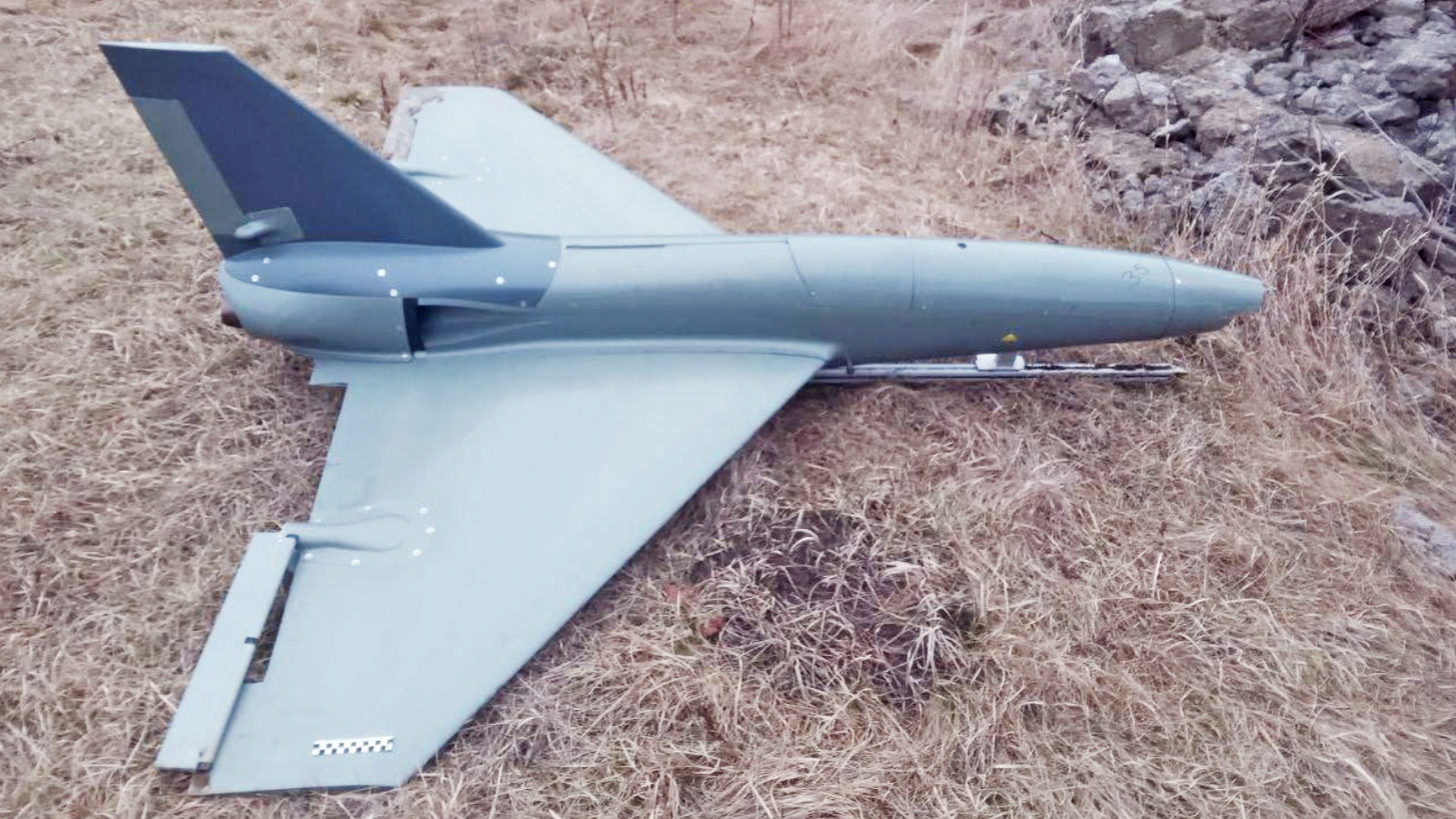A British-designed Banshee jet-powered drone, or a design identical to it, has appeared in the conflict in Ukraine for the first time. The uncrewed aircraft is the latest addition to Kyiv’s growing inventory of one-way, standoff attack drones, while the use of the Banshee in this capacity is something that The War Zone predicted in the past.
Photos and a video of the drone began to circulate on social media today. They show the Banshee — or Banshee derivative — after it reportedly crashed behind Russian lines, in Ukrainian territory. The drone is said to have come down near the town of Novoazovsk, very close to the Russian border, in Ukraine’s Donetsk region.
The drone appears to be either a straightforward adaptation of the QinetiQ Banshee Jet 80+, best known as a target drone, or a related development that retains all the salient features. Bearing in mind the apparent attack mission, the drone will have been fitted with a warhead, but may otherwise be little changed from the original product.
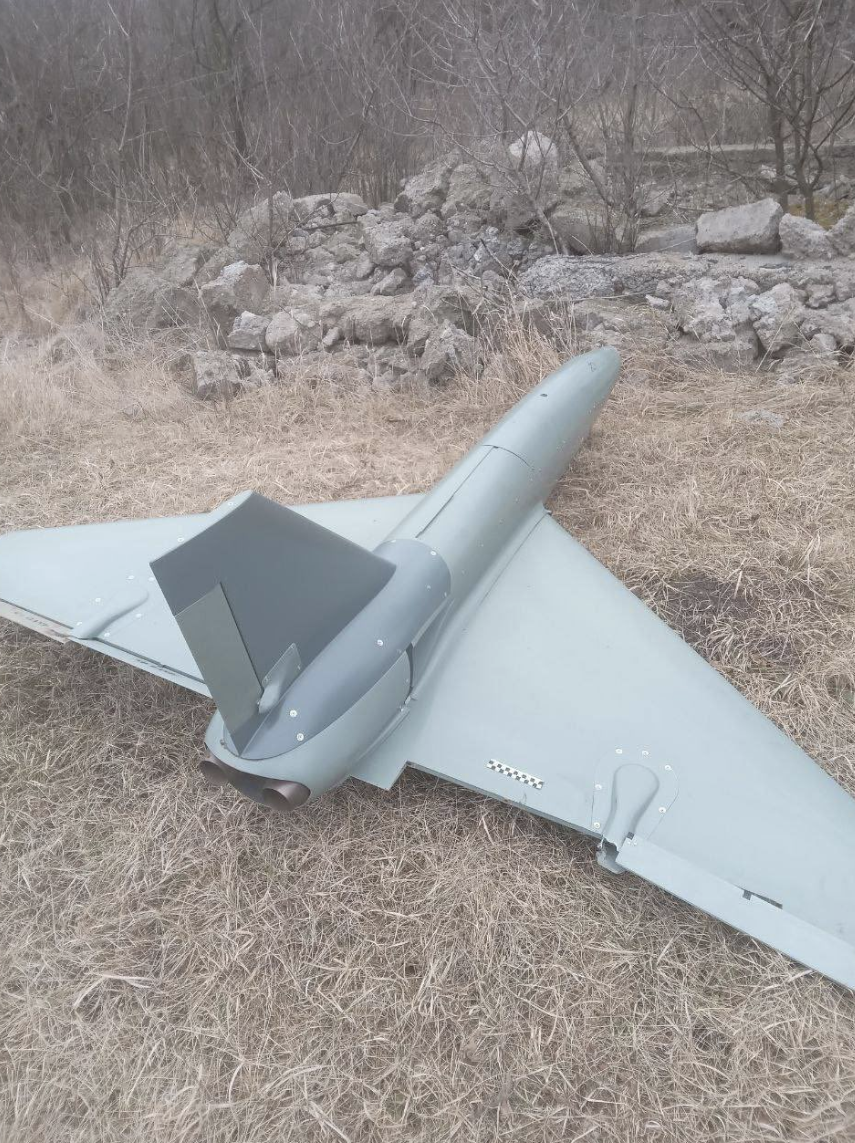

Based on the imagery, there do seem to be some detail differences on this drone compared to the Banshee Jet 80+, most notably some kind of rail under the belly, perhaps related to its launch system. The standard Banshee Jet 80+ normally takes off via a portable catapult launcher, as seen below. If not shot down as a target, the target drone can be recovered under a parachute after completing its mission. This, of course, might still be an option, if the Ukrainian version is not a suicide drone.
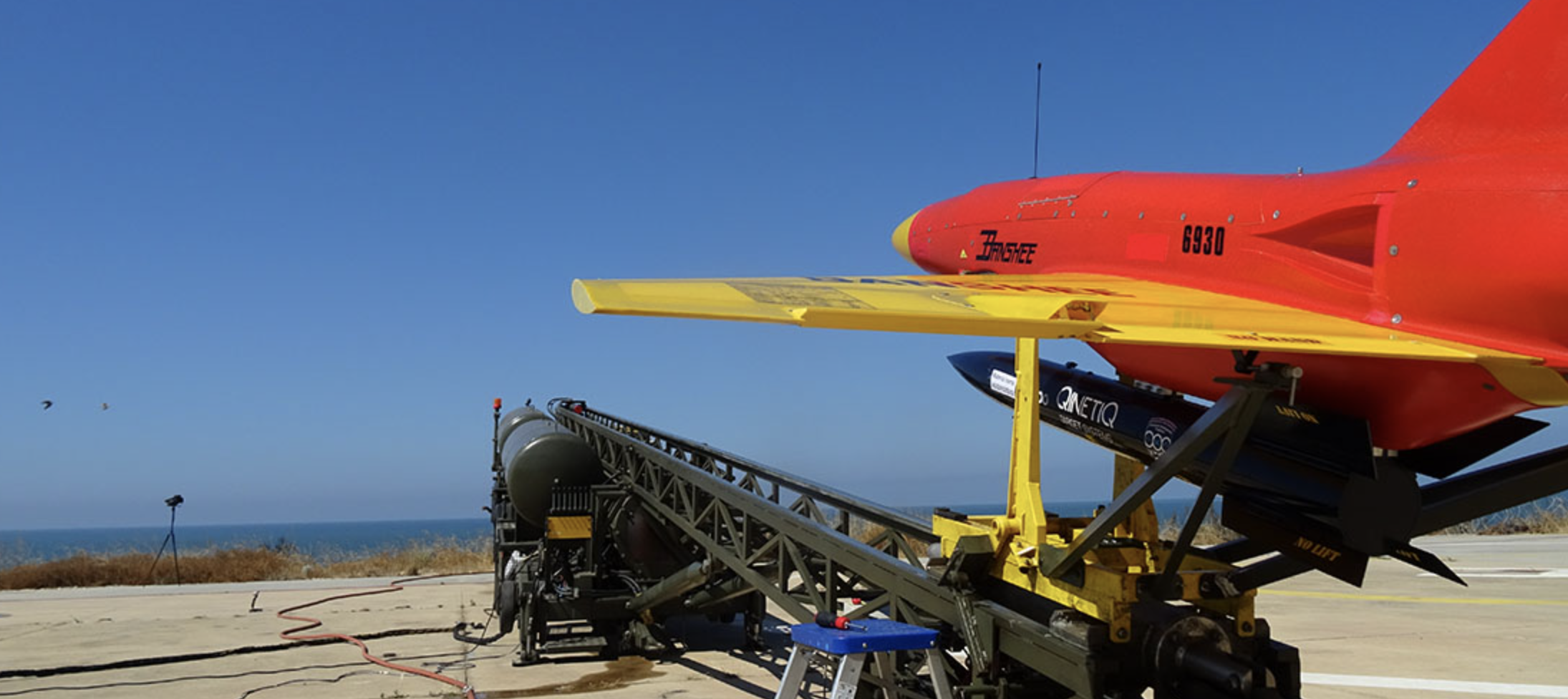

According to Russia’s state-run TASS news agency, the drone was being operated in a one-way attack capacity — also known as a ‘suicide drone’ — and was “intercepted” by Russian forces. According to the same source, citing Russia’s Federal Security Service (FSB), the drone had been “launched by the Ukrainian military to attack civilian infrastructure in the south of the Donetsk People’s Republic (DPR).”
The FSB claims that it acquired details of the drone’s mission, specifically to target “a large civilian infrastructure facility in Mariupol.” The TASS report adds that the drone “was intended to fly a circle over the Novoazovsk district and strike the facility from Taganrog Bay.”
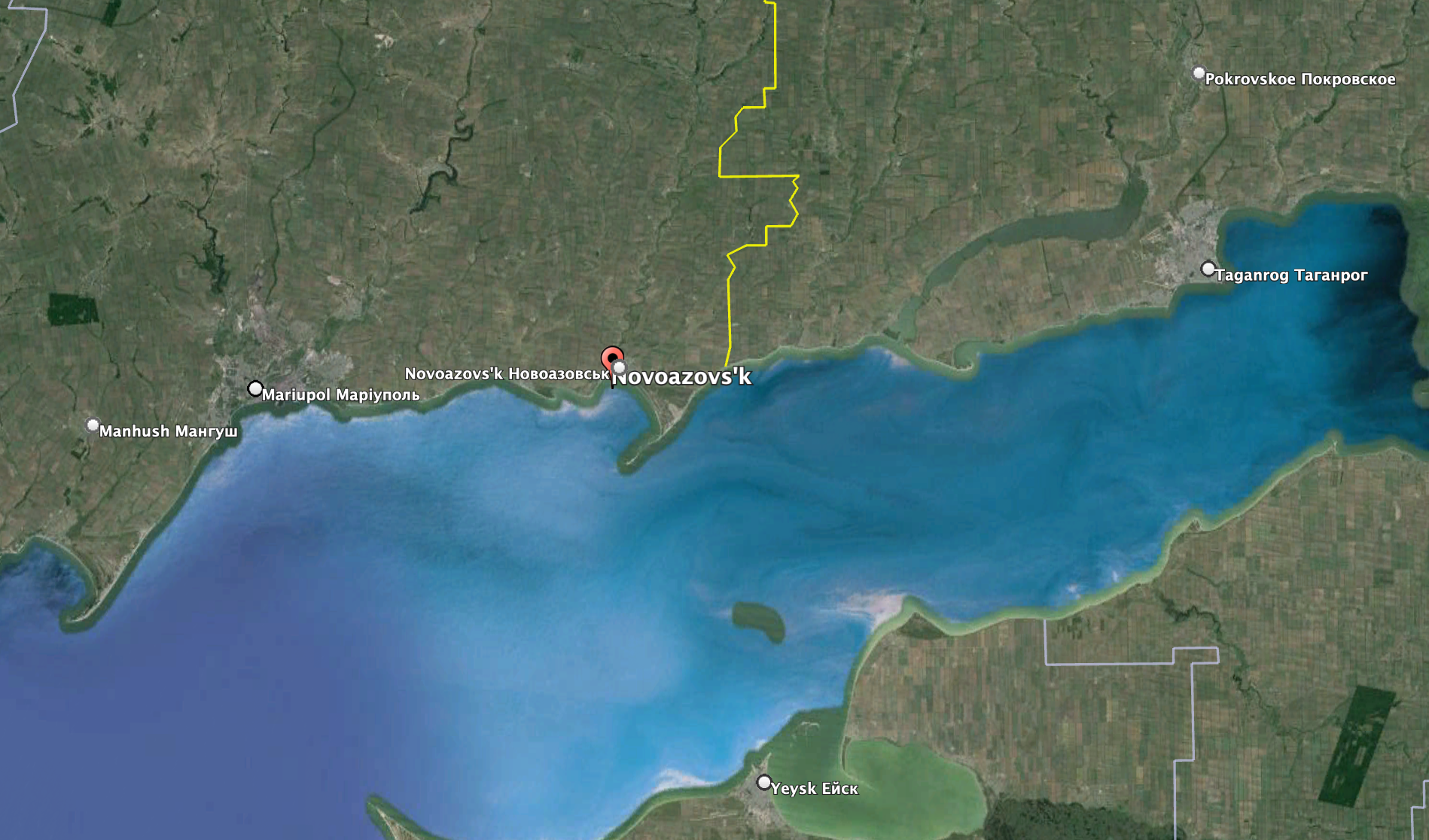
The FSB also claimed the drone carried 15 pounds of explosives. “After its controlled landing, bomb technicians defused the drone’s warhead and destroyed it on the spot,” the TASS report states.
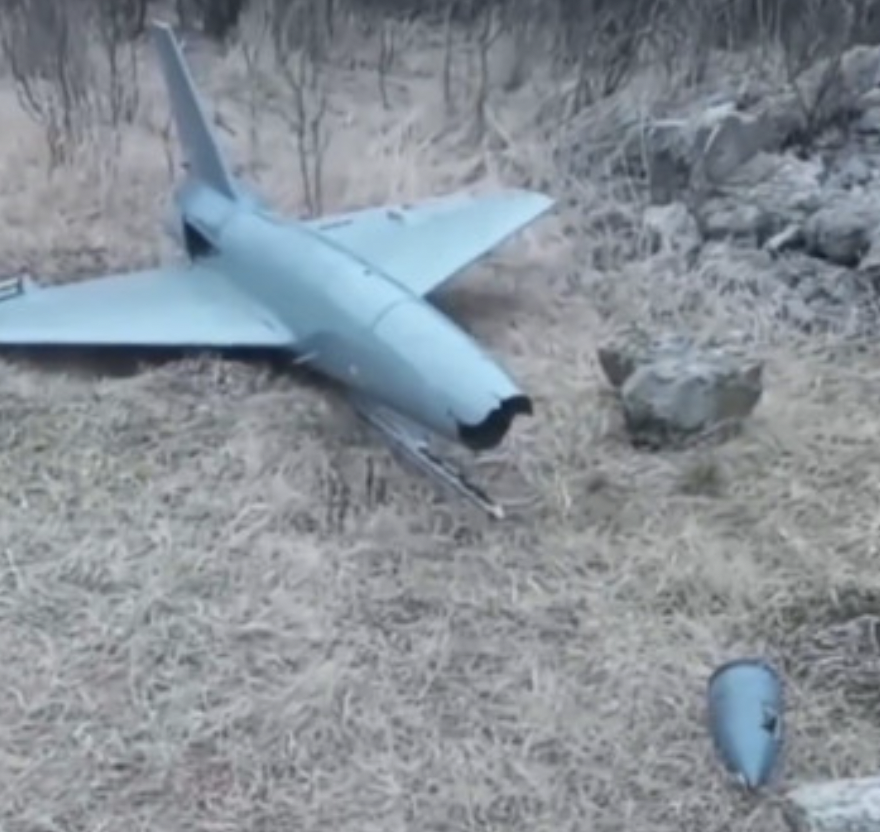
These Russian claims cannot be independently verified at this point and the suggestion that the flight plan for the drone has already been obtained is questionable. On the other hand, it would certainly make sense for the Banshee, or an adaptation of it, to be used by Ukraine as a one-way attack drone.
Utilizing jet-powered target drones for attack missions is something that Ukraine already has considerable experience with, with larger designs offering a very long range, able to strike targets deep within Russia, as well as smaller ones with correspondingly shorter ranges. Two examples, from domestic production, are seen below, the UJ-25 Skyline with an estimated range of around 500 miles, and the Morok, based on the RZ-60 target drone, with a reported range of around 190 miles.
Almost exactly a year ago, The War Zone reported on what had, up to that point, been a secretive U.K. program to rapidly develop a number of “complex” drones for use by Ukraine.
It’s not confirmed that the drone that reportedly came down near Novoazovsk was related to this program, but it would make total sense if it was. As we said at the time:
“A Banshee development would also appear to be suitable for adaptation as a ‘suicide’ drone, should that be desired. At the very least, it would seem likely that work with the Banshee could have informed the designs developed for Ukraine.”
Powered by a pair of small jet engines, the Banshee Jet 80+ is roughly 11 feet long. The drone can fly at an altitude of up to 25,000 feet ceiling, has a maximum speed of 400 knots, and a normal range of 62 miles.

Reportedly, the Ukrainian drone came down around 62 miles behind the front lines. At this point, it’s worth bearing in mind that we don’t know what kind of configuration or mission profile provides a range of 62 miles.
The U.K. Royal Navy says the Banshee target drone is “hard to detect on radar, giving it all the likeness of an incoming missile — making it a realistic adversary for sailors to train in countering aerial threats.” A low radar signature is obviously a benefit when being used as an attack drone, too. Furthermore, while Russia claims this drone was brought down by its air defenses, this remains entirely unconfirmed and the imagery doesn’t show typical damage from a direct kinetic intercept.
Another factor likely adding to its survivability is the Banshee’s ability to maneuver at up to 9g. Conceivably, the drone could be programmed to perform maneuvers that would make it considerably harder to intercept.
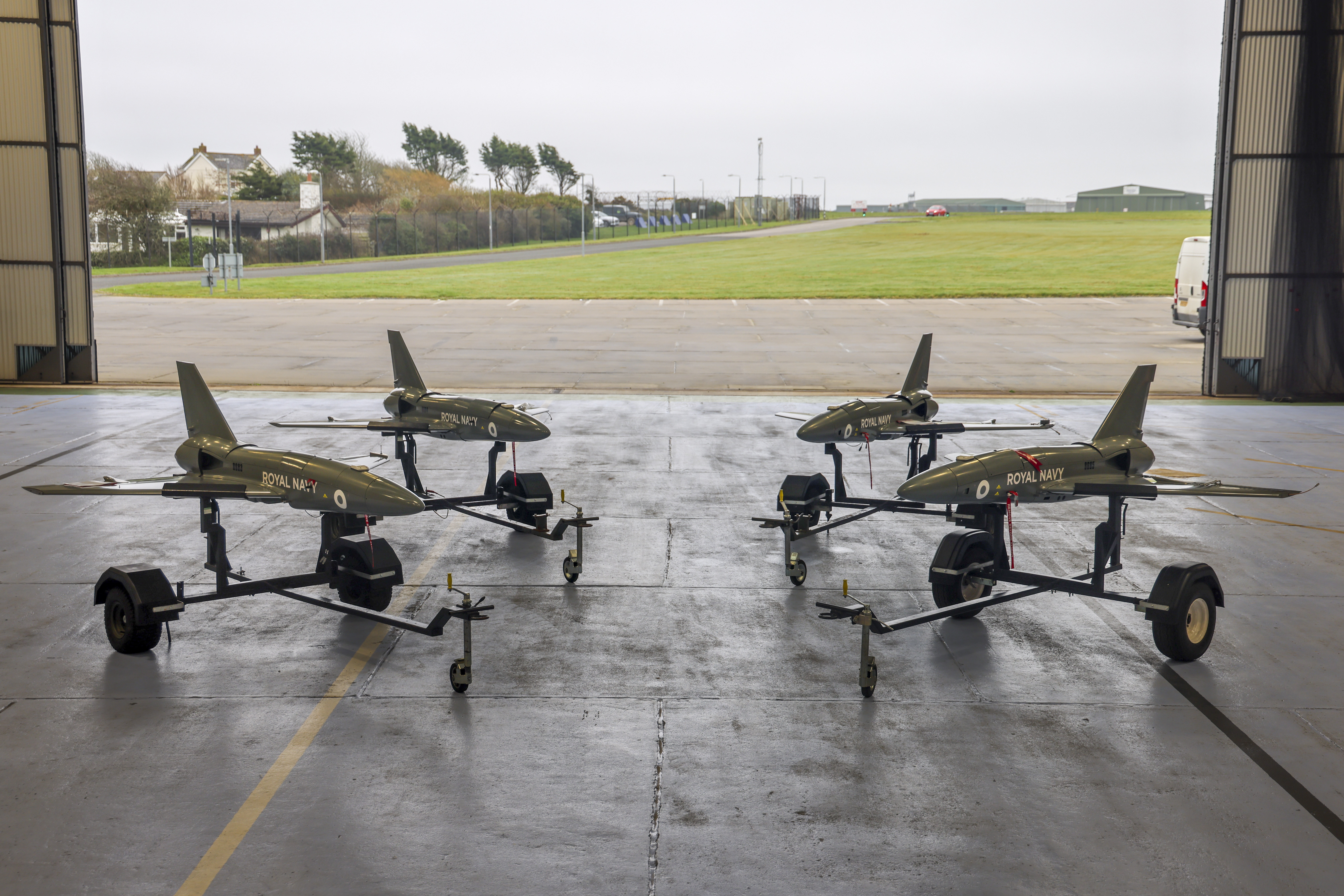
Once again, while we don’t know the exact relationship between the drone in the imagery and the Banshee Jet 80+, we do know that the United Kingdom is forging an ever-closer military relationship with Ukraine, with drones very much at the forefront.
We also know that the United Kingdom has trialed various different uncrewed capabilities that could be used by Ukraine, including surveillance drones and, most intriguingly, what is described as a “3D-printed delta-wing ‘suicide’ drone.” It’s not impossible that the drone in the imagery is a 3D-printed attack version of the Banshee Jet 80+.
It should also be remembered that the potential of the Banshee Jet 80+ to be adapted for operational missions, in addition to target facilities, is something that’s being explored by the U.K. military as well.
Most notably, the Banshee Jet 80+ has been launched from the deck of the aircraft carrier HMS Prince of Wales. This demonstration was intended to show the broader potential for flying future adversary missions as well as more capable operational drones from aboard the two Queen Elizabeth class carriers.

As well as developing new drone technologies, the United Kingdom is also known to have transferred a considerable number of existing drones to Ukraine — at least 2,000, including loitering munitions — as part of its aid effort to that country. There have been few details concerning the particular types supplied, but Banshees may have been included, either already adapted for one-way attack missions, or appropriately modified once in Ukraine.
Whatever the origins of the drone in the photos and video, it’s clear that the Ukrainian Armed Forces are making increasing use of drones as strike weapons, with more sophisticated designs that provide a fairly achievable — and relatively inexpensive — method of hitting Russian targets at longer ranges.
There is also an argument that an intermediate-range drone — a category that this new drone may well belong to — fills a particular Ukrainian requirement. After all, when it comes to attacking less time-sensitive lower-priority targets, it would make sense to use a drone like this, rather than a more expensive M31 guided rocket or Ground-Launched Small Diameter Bomb (GLSDB), for example. Potentially, the lower cost of drones of this kind could also allow them to be fielded in much greater numbers, too.
Earlier this month, we reported on the appearance of another new jet-powered Ukrainian attack drone, the wreckage of which appeared in Russia. Intriguingly, this drone also has a close resemblance to the Banshee, albeit with several key differences. While we know very little about the origins of this unnamed drone or its capabilities, it’s yet another indication of Ukraine’s increasingly active development of one-way attack drones as a means of taking the fight more directly to Russia.
While we await more details of the Ukrainian Banshee — or Banshee lookalike — it will also be interesting to see what, if any, other U.K.-derived drone technologies appear in Ukrainian hands, whether as one-way attack weapons or for different mission sets altogether.
Contact the author: thomas@thewarzone.com
